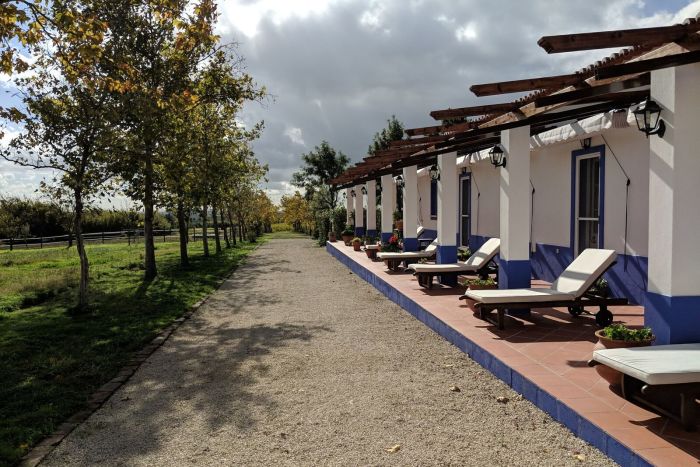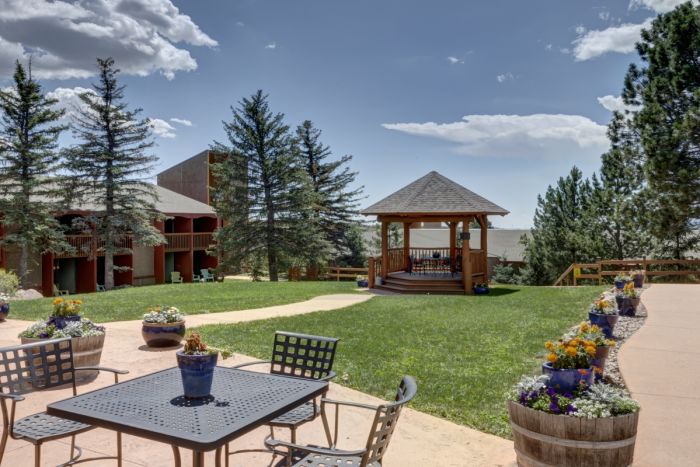Psilocybin is a chemical compound most often associated with “magic mushrooms.” Despite historical stigma, researchers have begun exploring its potential medical applications. This powerful medicine may be especially helpful for clients with treatment-resistant depression (TRD).
This can be an all-consuming diagnosis, and many clients struggle to find effective depression treatment. While some people benefit from tried-and-true medications, like SSRIs and mood stabilizers, these solutions don’t work for everyone. Fortunately, doctors and scientists are actively seeking new ways to treat these clients using experimental modalities. A few options, like ketamine therapy and transcranial magnetic stimulation (TMS),1 are becoming increasingly popular. Psychedelics are also a promising option.
Psychedelic medicine is an increasingly popular treatment2 for a variety of mental health conditions, including depression, anxiety, and PTSD. And a growing body of research supports the theory that psilocybin can be extremely effective in treating TRD.
What Is Psilocybin?
Psilocybin3 is classified as a psychedelic. Substances of this kind “interact with the serotonin receptors (5-HT/5-hydroxytryptamine receptors) and their subtypes densely located within the brain. These receptors mediate emotions and moods such as anxiety and aggression, cognition, sex, learning memory, appetite along with other biological, neurological and neuropsychiatric processes.” The same receptors are also targeted by many pharmaceuticals, including antipsychotics and antidepressants.
Because of its effect on serotonin, scientists are researching psilocybin as a possible treatment for depression, anxiety,4 and a number of other mental health concerns. However, it faces a great deal of social stigma, since it can also be used recreationally. And any recreational substance can be misused. Despite this concern, psychedelics are comparatively safe;5 according to 2013 statistics, LSD and psilocybin combined “accounted for just 0.005 percent of US emergency room visits.”
Psilocybin has not always been legal in the U.S., even for purely scientific purposes. But this is starting to change. As we learn more about its medical applications, it will likely become more accessible to interested clients. As of December, 2021, it has been decriminalized in Denver, Oakland, Santa Cruz, and Detroit. California may soon take this a step further. Senate Bill 519, if passed, would decriminalize psilocybin,6 MDMA, and other psychedelics in the entire state.
Some experts believe this trend will continue. According to one article, despite once being “dismissed as the dangerous dalliances of the counterculture, these drugs are gaining mainstream acceptance. Several states and cities in the United States are in the process of legalizing or decriminalizing psilocybin for therapeutic or recreational purposes.”7
Psilocybin is not considered to be addictive.8 On the contrary, it may even help people recover from substance use disorders. If you think this treatment may be right for you, make sure to use it under medical supervision. Despite its apparent safety, any substance has the potential to be harmful, or to cause relapse.
The Experience of Psilocybin
The word “psychedelic,”3 first used in 1956, comes from the Greek roots “psyche (i.e., the mind or soul) and delos (i.e., to show).” This class of substances can cause visions that reveal a person’s deepest emotional experiences. Using them offers many clients valuable insight into their own mental health.
When taken in larger doses, psilocybin induces a psychedelic “trip,” in which users spend several hours going through an emotional or even spiritual journey. It’s important to undertake this type of experience in a safe and welcoming environment. Research suggests that psilocybin may be especially effective in a natural setting,9 where clients can spend time communing with the great outdoors.
It’s also possible to take psilocybin in smaller amounts, or microdoses. Research has “identified positive associations between microdosing and mental health,10 and…associations between microdosing and reduced severity of symptoms of depression, anxiety and stress among adults with reported mental health concerns.” These experiences can be more accessible, because they are shorter and/or less intense than larger doses. This is a good option for clients who want to improve their mental well-being, but don’t have the emotional capacity to spend several hours experiencing visions.
Mental Health Benefits of Psilocybin
Psychedelics in general, and psilocybin in particular, have a number of known mental health benefits. In one study, “the people who received psilocybin reported significantly more improvements in their general feelings and behavior11 than did the members of the control group. The findings were repeated in another follow-up survey, taken 14 months after the experiment.”
Specifically, research suggests that this medicine may alleviate symptoms of depression,12 suicidality, anxiety, obsessive compulsive disorder, and several types of substance misuse. Subjects have shown “increased ratings of positive attitudes, mood, social effects, and behavior,” even up to 14 months after receiving psilocybin.
For clients with treatment-resistant depression, this is a comparatively safe and low-impact treatment, especially because the controlled use of psilocybin can have such long-term effects. Unlike most medications—like SSRIs—it doesn’t need to be taken daily in order to be effective. This may also make it more accessible to clients who can’t easily afford a regular prescription.
What’s more, psilocybin may be just as effective as these more common treatments. More and more research supports this idea. One study “suggested that psilocybin might work as well as the common antidepressant13 escitalopram (Lexapro) at relieving moderate to severe depression.” Another found that microdoses of psilocybin may cause long-term changes to brain activity,14 causing “increased responses in reward-learning, attention, and decision-making circuits.”
Clients with TRD may also see benefits from this treatment that go beyond relieving their symptoms. For example, experts believe that psilocybin “increases cognitive and neural flexibility in patients with major depressive disorder.”15
Although the data is extremely promising, it’s important to remember that this is a relatively new field of study. Psilocybin is considered to be one of the safer substances available, but it is not entirely without risk.
Potential Risks of Psilocybin
This treatment has some well-known side effects. “About 90% of patients” in one clinical trial “experienced mild to moderate side effects from the psilocybin,16 including nausea, insomnia, fatigue and headache. These symptoms dissipated quickly.” It is most strongly associated with brief gastrointestinal issues. Clients usually experience these symptoms shortly after ingesting psilocybin, and find relief long before the substance wears off.
For certain clients, however, the treatment may cause more dangerous adverse effects. Because psilocybin raises blood pressure,17 “people with uncontrolled hypertension are advised to abstain.” Make sure you talk to your doctor before seeking this treatment, especially if you have a personal or family history of heart problems.
The associated psychological risks may be an even greater concern, especially for clients with certain mental health diagnoses. For example, those with “psychotic disorders such as schizophrenia (or a strong predisposition for them) are generally advised against taking the hallucinogen,” as it may have unpredictable effects, and can even worsen their condition.
And although psilocybin can be extremely helpful for treatment-resistant depression, it is absolutely imperative that these clients use it under medical supervision. This is because, in the wrong dosage, it may cause suicidality. In one clinical trial,13 some participants with TRD “experienced a ‘serious adverse event,’ such as suicidal behavior, intentional self-injury or suicidal ideation.” This may have been due to an incorrect dosage or inadequate medical supervision, either during or after the experience. Whatever the reason, this data illustrates that there is still much to learn about this treatment. If you decide to try it, a private rehab center that offers psilocybin treatment will ensure you do so under the supervision of an experienced clinical team and a clear plan for aftercare.
Unlike most, or possibly all, other pharmaceutical treatments, psychedelics are strongly influenced by the client’s intention. “Positive expectancy”18—or, the expectation that the treatment will help—has been shown to have an impact on psilocybin’s effectiveness. If you go into an experience with acute anxiety, trepidation, or a belief that it will go poorly, you’ll probably be proven right. On the other hand, if you’re in a positive or hopeful state, you may experience much greater benefits. It’s important to plan these experiences carefully, but also stay mindful of your own feelings in the moment as you approach treatment. If you’ve planned extremely well, and then you feel poorly when the day arrives, it’s best to postpone if at all possible.
Is Psilocybin Right for You?
Psilocybin, even more than other treatments, is an extremely personal experience. Not everyone is emotionally prepared to dive that deeply into their own subconscious. And even if it feels right for you, it may not be appropriate on any given day. The act of planning this treatment can be a powerful exercise in mindfulness, even before the substance is administered.
Under the right circumstances, though, clients find psilocybin to be immensely positive. And as we amass more data, doctors will likely find ways to make it even safer. If you decide to try this treatment, understand that there is still much to learn. In this early stage of research, it should absolutely not be your only form of treatment for any diagnosis. But with the right setting, dosage, and therapeutic team, it may be extremely helpful.
Discover Rehabs That Treat Depression
Latest studies show that psilocybin is a promising treatment for depression, however this form of therapy isn’t widely available yet. At the same time, there are several other forms of therapies and treatment programs for depression out there. To learn more about your options, browse our collection of rehabs that specialize in depression treatment.
Frequently Asked Questions About Treating Depression With Psilocybin
What is psilocybin and how does it work in depression treatment?
Psilocybin is a naturally occurring psychedelic compound found in certain mushrooms. It interacts with serotonin receptors and their subtypes in the brain, leading to altered states of consciousness. Because of its impact on serotonin, it has potential therapeutic effects in depression and anxiety treatment.
What are the potential benefits of psilocybin in treating depression?
Psilocybin-assisted therapy has shown promise in improving mood, reducing depressive symptoms, increasing emotional openness, and promoting long-term positive changes in individuals with treatment-resistant depression.
Is psilocybin treatment for depression safe and legal?
Psilocybin is a Schedule I controlled substance in many countries, but it is being researched for therapeutic purposes. Psilocybin-assisted therapy is conducted in a controlled and supervised setting to ensure safety. Ongoing studies aim to assess its efficacy and safety profiles.






